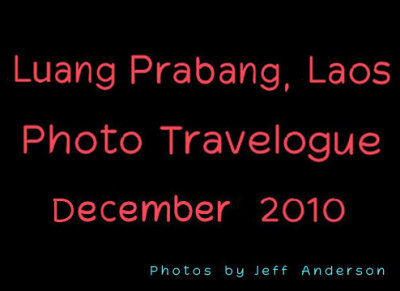
Luang Prabang, Laos cover page. |
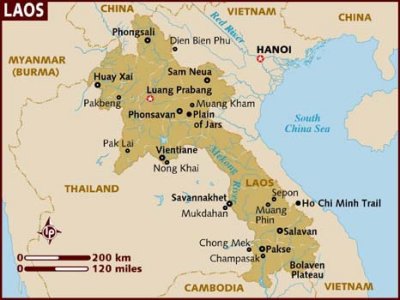
Map of Laos with the star indicating Luang Prabang. |
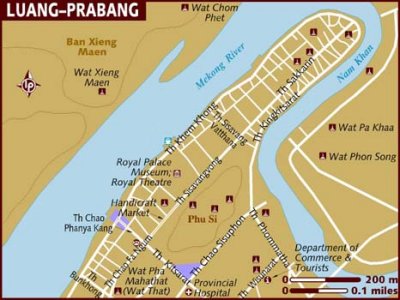
Map of Luang Prabang. |
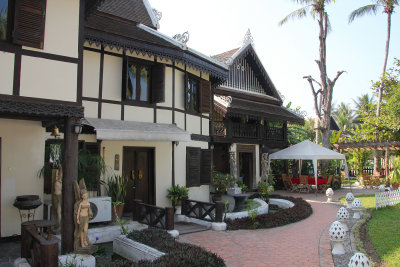
The Ramayana Boutique Hotel & Spa where I stayed in Luang Prabang. |

Naga (snake) statue at the hotel. |

The dining area at the Ramayana Boutique Hotel & Spa. |

Entrance to the very old Wat Visoun temple located on the south side of Phou Si hill, outside of the main area of the old city. |
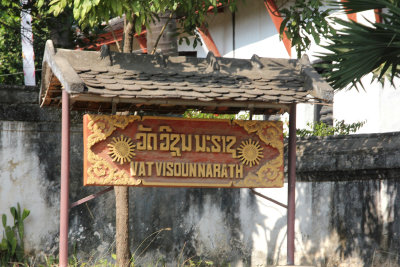
Sign for Wat Visoun temple. |
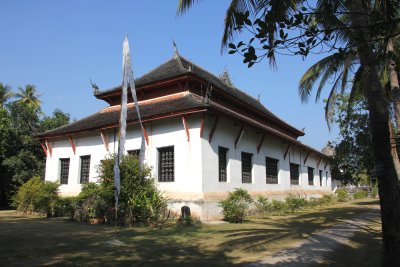
Rear view of the Wat Visoun temple with naga (snake) gargoyles. |
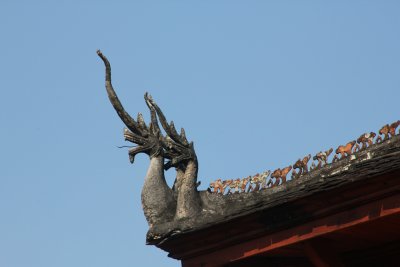
Close-up of one of the naga gargoyles. |
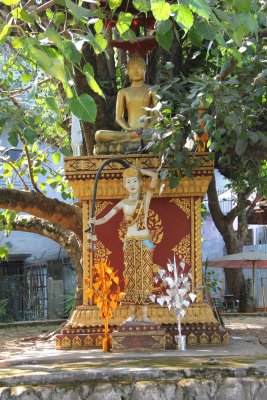
A Buddhist shrine under a Bodhi Tree (sacred fig tree) under which Buddha is said to have achieved enlightenment. |
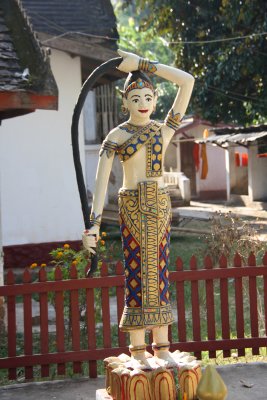
Statue of a woman at Wat Visoun temple holding a naga (snake), which is sacred in Buddhism. |
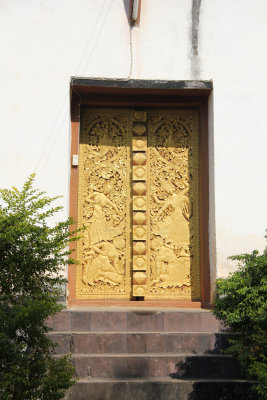
Intricate gold carvings on this rear door at the Wat Visoun temple. |
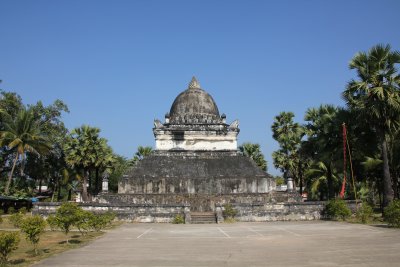
The stupa is known as That Pathum (Lotus Stupa). It was built in the 16th century but sacked by the Chinese in the 19th century. |
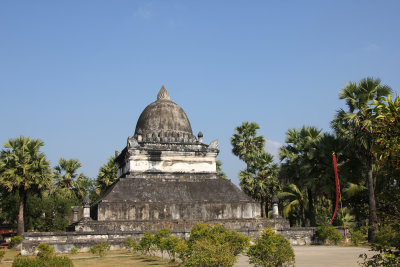
It is more commonly known as That Makmo because its shape resembles a watermelon ("makmo" being Lao for watermelon). |
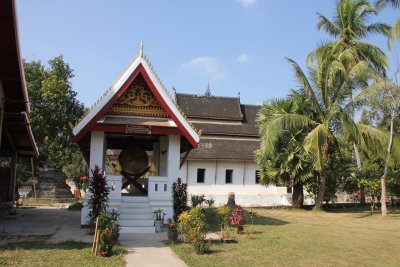
A gong at the temple was probably used to summon monks to prayer or to meals. |
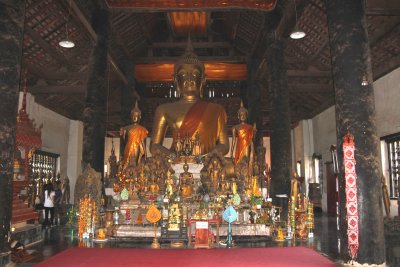
A typical alter with a large seated Buddha inside the Wat Visoun temple. |
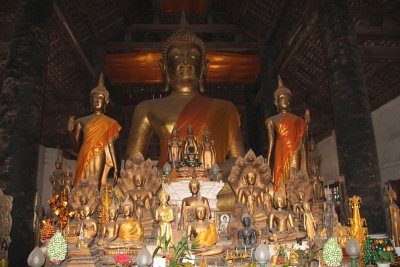
Close-up of the Buddha. Many smaller Buddhas surround it. |

Note the bejeweled ivory-colored Buddhist image. |

An intricate wooden carving depicting scenes from Buddhist beliefs. |
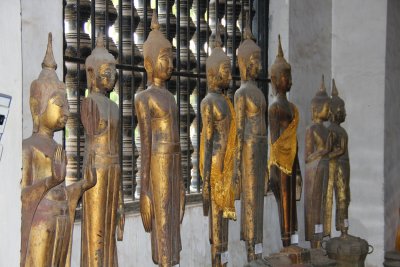
Along the outer wall behind the alter are many more standing Buddha images (a pose referred to as "Calling for Rain" style). |

These standing images were moved here from other destroyed temples after the Haw invasion by the Chinese in the 19th century. |
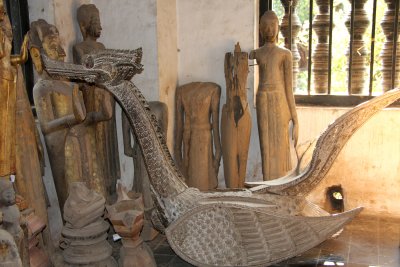
More wooden carvings including this bird sculpture. |
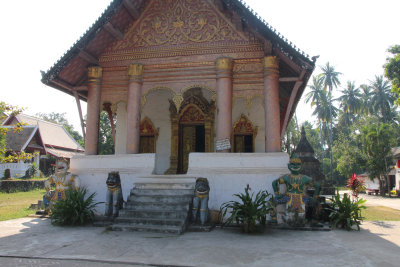
Next to Wat Visoun and the That Makmo is the smaller temple of Wat Aham. |

A colorful Buddhist statue outside of Wat Aham. |
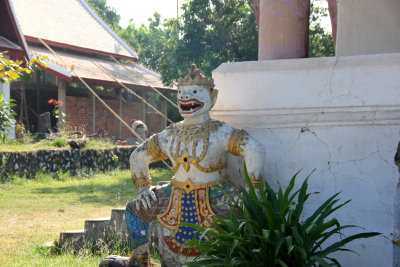
Another colorful Buddhist statue outside the temple. They appear to be guarding it. |
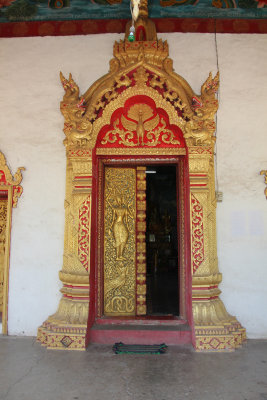
The ornate, golden entrance door of Wat Aham temple. |
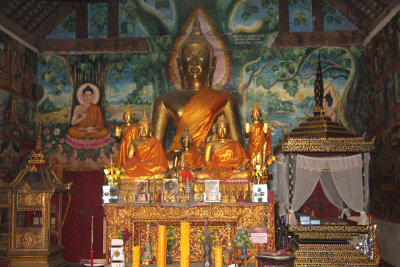
Inside of Wat Aham, there is another large seated Buddha. |
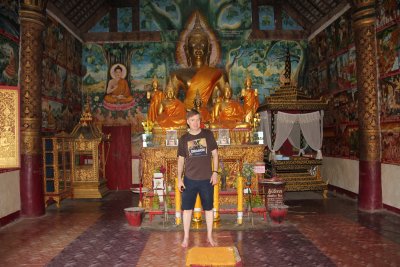
Me posing in front of the seated Buddha. |

The walls are covered with "instructional" scenes from Buddhist theology. |
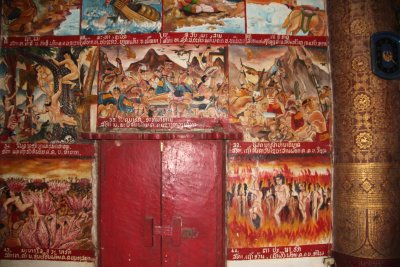
These depict the karmic "hell" that awaits those who inflict cruelty on others during their life. |

In Buddhism, "karmic" means the effect of a person's actions and conduct during the phases of the person's existence. |

It is obvious from these paintings that the "golden rule" does not just apply to Christianity. |
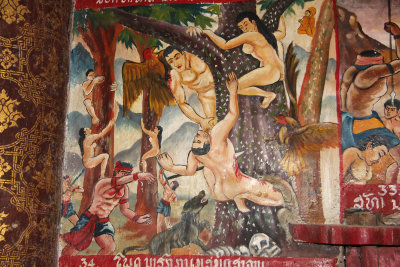
More horrific depictions of hell for Buddhists who are unworthy of rewards when reincarnated. |
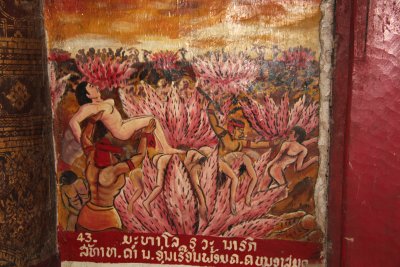
More depictions of a Buddhist hell. |

One of Luang Prabang's many tuk tuks driving down the street. |
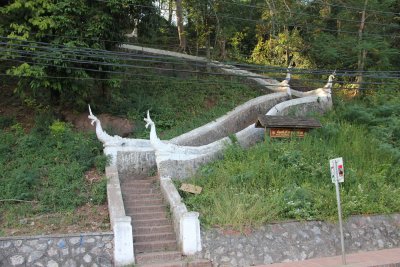
Stairs leading up the Phou Si Hill in Luang Prabang. The sides of the hill and top are studded with small temples and shrines. |

View of Mae Kok River, a tributary of the Mekong River as seen from Phou Si Hill. |
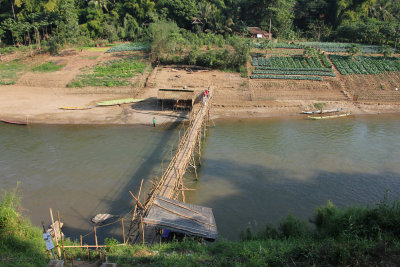
Bamboo bridge that crosses the Mae Kok River. |

A monk in orange robes was crossing the bridge. |
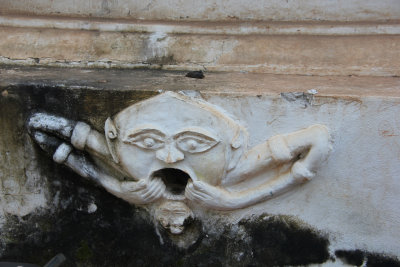
I saw this unusual sculpture which is used for water drainage when climbing up Phou Si Hill. |
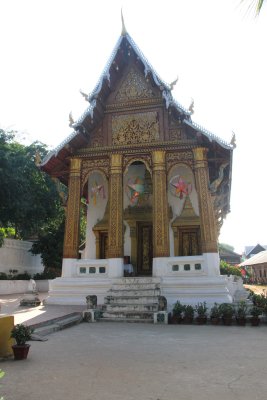
One of the small temples that I saw on Phou Si Hill. |
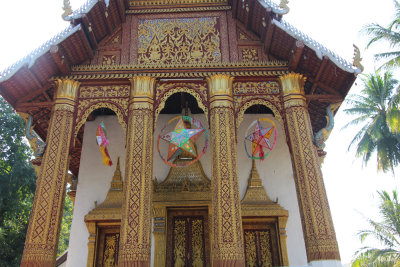
Close-up of the temple. Note the star ornaments which are supposed to bring good luck. |
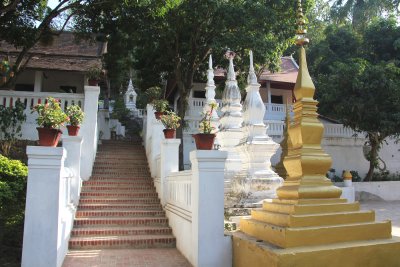
More steps leading up Phou Si Hill. |
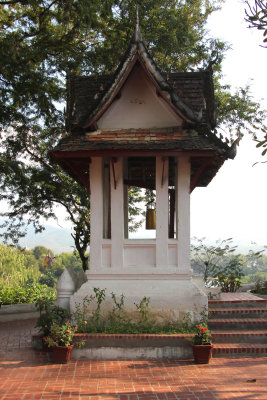
There is a bell inside this small structure. |
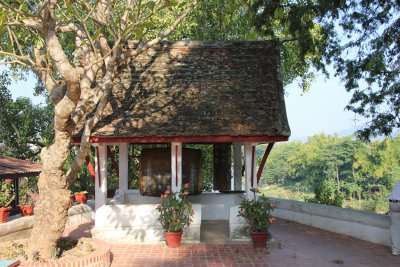
Another small structure that appears to house a drum or a gong. |
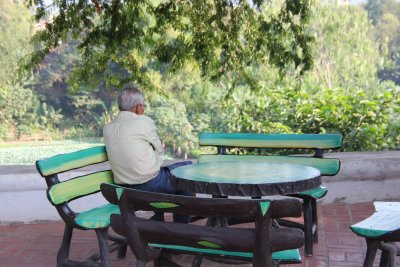
The Lao man was taking a break. We were about half-way up Phou Si Hill. |
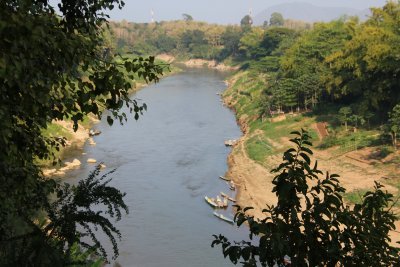
A view of Mae Kok River from about half-way up the hill. |
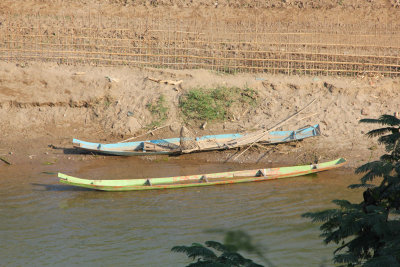
Wooden boats along the river. |
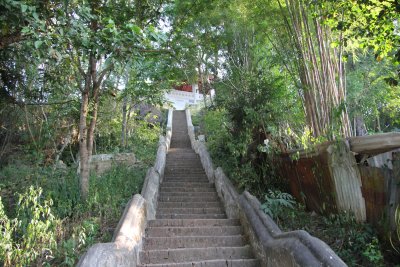
At this point on Phou Si Hill, the steps were looking pretty formidable! |
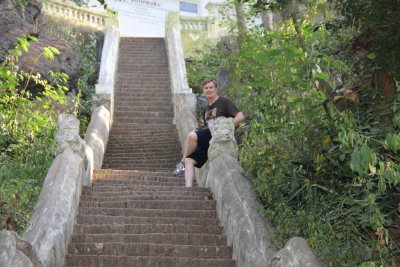
I took a break, not because I was tired, but to take a picture. |
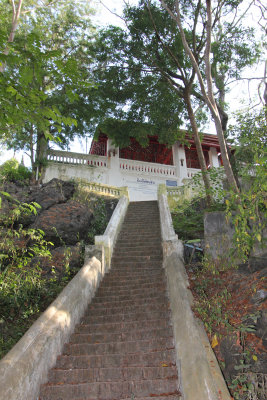
Not too much farther to reach the next shrines on Phou Si Hill. |

This shrine stands in front of the Buddha's footprint on Phu Si Hill. |
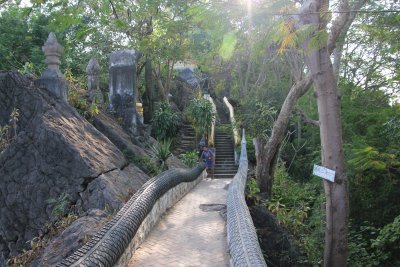
The pathway on the hill had these amazing nagas (snakes) serving as banisters. |
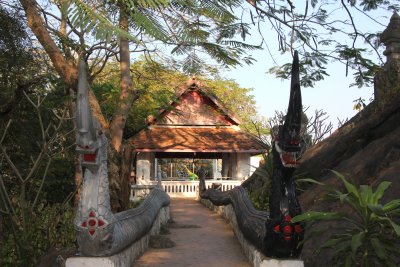
The naga pathway lead to this structure. |
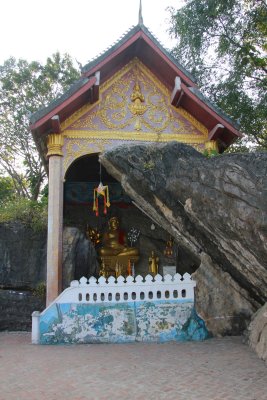
More Buddhist shrines on the hill. |

Close-up of a golden Buddha. |
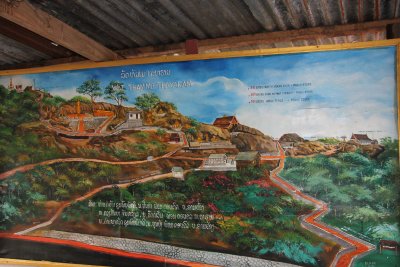
This painting depicts the pathway and some of the many stairs going up Phu Si Hill. |
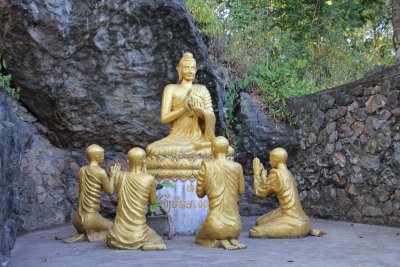
Another shrine with Buddha and his disciples. |

Statue of Buddha preaching reason near the top of Phu Si Hill. |
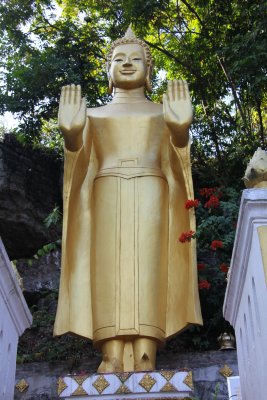
Buddha's hands are in the double abhaya mudra position. |

This shrine is at the top of Phu Si Hill. |
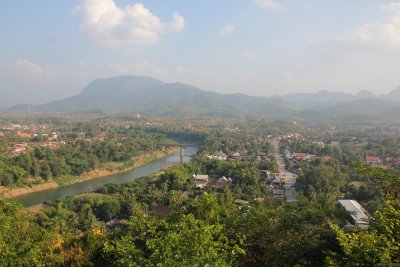
View of Mae Kok River from the top of Phu Si Hill. |
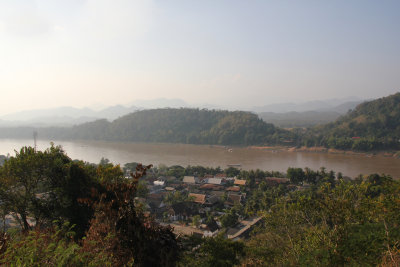
View of the Mekong River from another direction on top Phu Si Hill. |
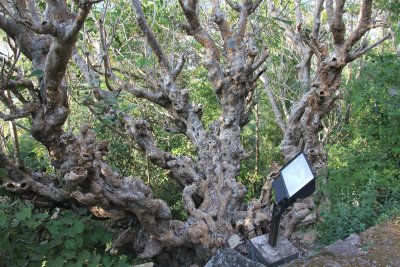
Climbing down the hill, I passed by this gnarly old tree. |
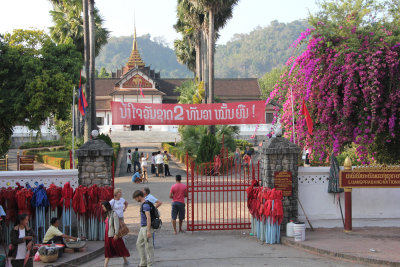
The bottom of the stairs was across from the entrance to the Royal Palace Museum. |
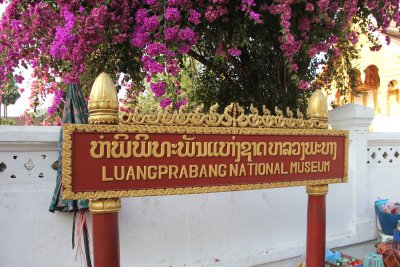
Sign for the Royal Palace (Luang Prabang National) Museum with buganvilias behind. |
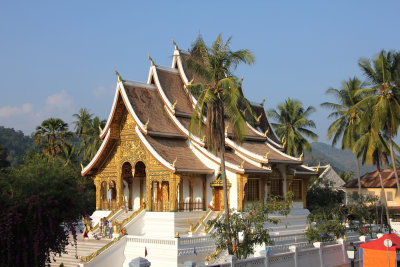
The Buddhist Temple at Haw Kham (Royal Palace) complex. It is a new temple on the grounds of the Royal Palace Museum. |
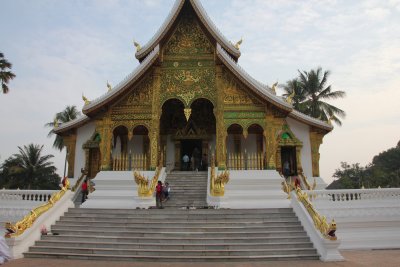
Front façade of the Buddhist Temple at Haw Kham (Royal Palace) complex. |
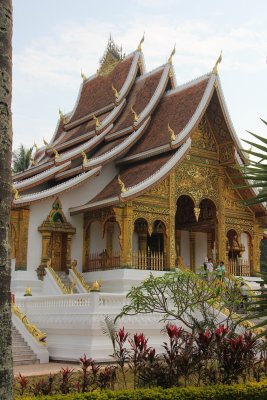
Side view of the temple. |

Note the magnificent naga banisters going up the temple's stairs. |
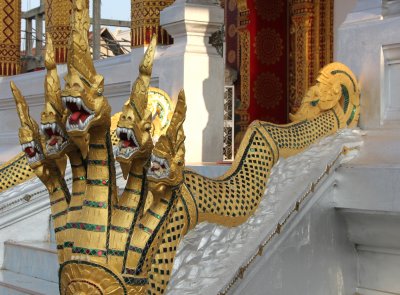
Buddhists believe the naga, which once tried to harm Buddha, was later subdued to become one of his disciples and guardians. |

Interesting view through the trees of the Buddhist Temple at Haw Kham (Royal Palace) complex. |
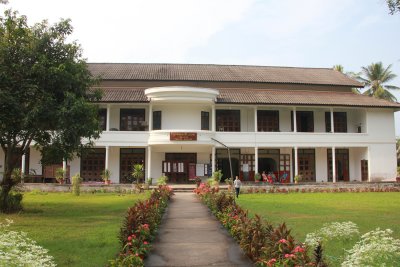
The Royal Palace Theater at the (Royal Palace) complex. |
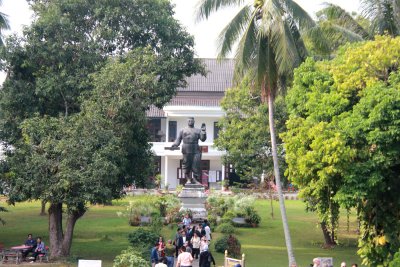
View from the the Buddhist Temple at Haw Kham (Royal Palace) complex of a statue of Savang Vatthana, the last king of Laos. |

Close-up of the Savang Vatthana statue. He ruled from 1959, after his father's death, until his forced abdication in 1975. |
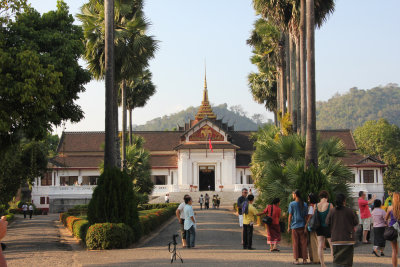
View of the old royal palace which is now a museum. It was built in 1904 on the foundations of a much older palace. |
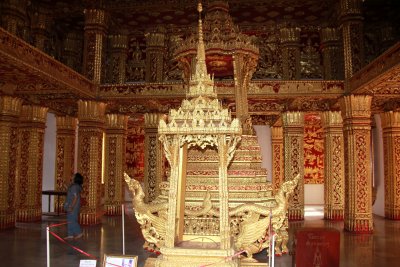
Interior of the ornate Royal Palace, which is a blend of Lao and French styles. |
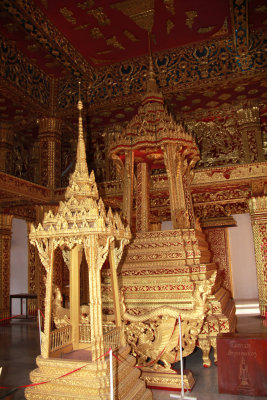
Connecting the reception wing with the residential wing is the throne hall. This appears to be the throne. |

During my tour, I passed these cute Lao school children doing exercises. |
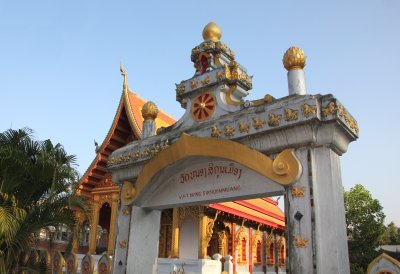
Ornate entry gate to the Wat Nong Sikhunmeuang temple. |
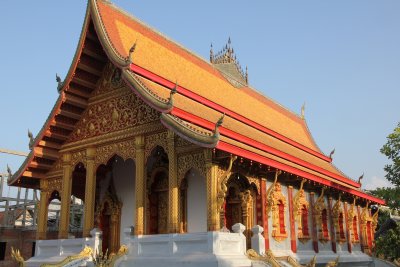
The temple is richly decorated, with fish and naga brackets supporting the roof from red and gold filigree pilasters. |
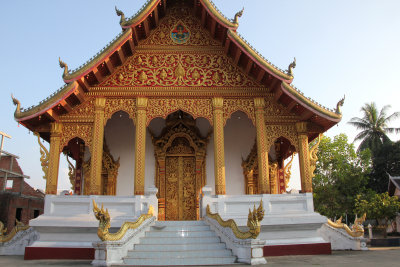
Front façade of Wat Nong Sikhunmeuang |
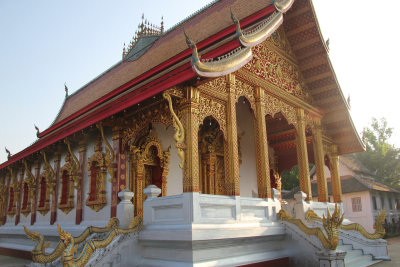
The temple was first built early in the the 18th century, but burned down and was rebuilt in the early 19th century. |

Later on the tour, I passed by these incredibly long wooden boats. |
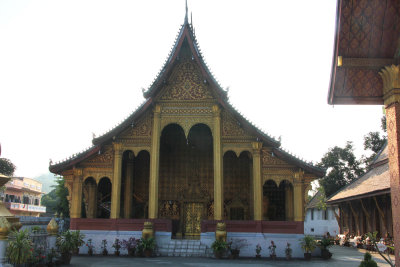
Wat Saen temple. "Saen" means 100,000 in Lao (it is believed that 100,000 Kip was donated to build the temple in 1718). |
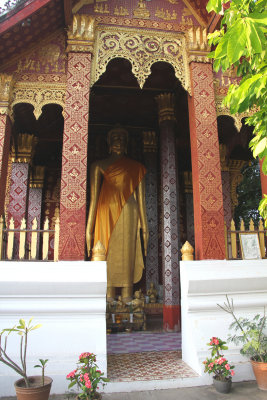
This very tall standing Buddha is inside the temple. |

Frontal view of the standing Buddha. |
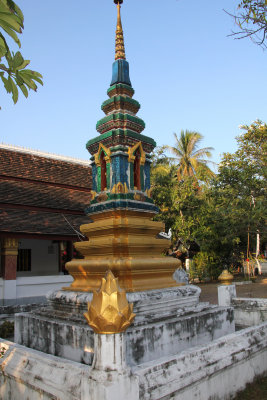
A small stupa that I passed by while on the tour. |
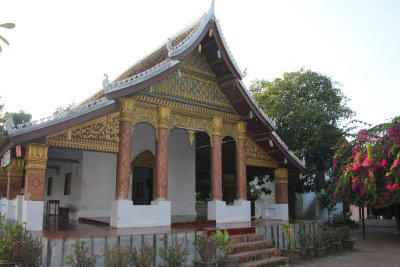
Another temple that I saw. There are a little more than 30 temples in the relatively small town of Luang Prabang. |

A beautiful Buddhist shrine that I passed. |
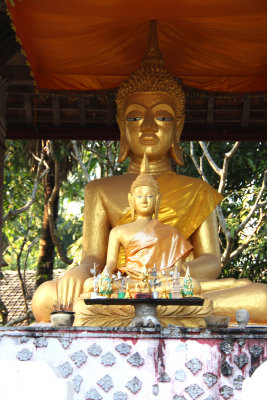
Close-up of the golden Buddha. |
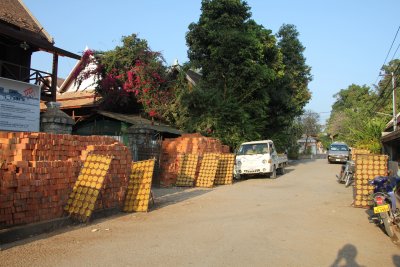
I walked down this street where they were drying wafers that they make. |
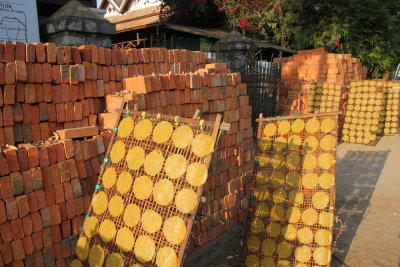
Close-up of the wafers. |
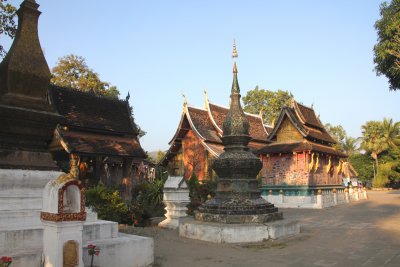
I was approaching the Wat Xieng Thong ("Golden Tree") temple, where the Khan flows into the Mekong, the city's oldest temple. |
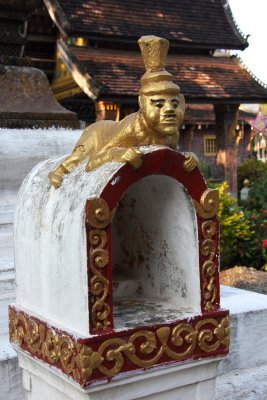
Interesting box at Wat Xieng Thong temple. It would make a nice mailbox! |
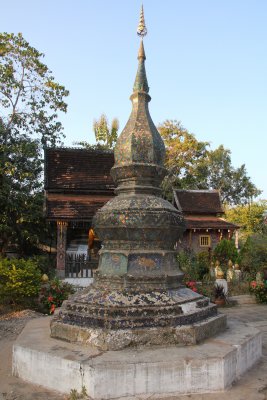
Very old stupa at the temple. |
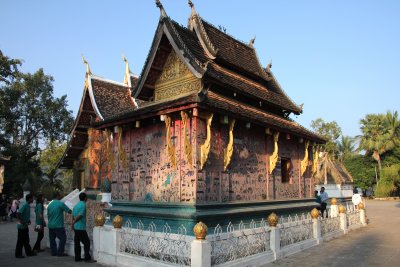
Wat Xieng Thong is the oldest temple in Luang Prabang. It was built in 1560. |
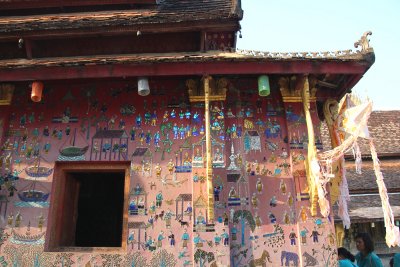
View of the temple's exterior. It survived the 19th century Black Flag Haw Chinese invasion since they used it as a garrison. |
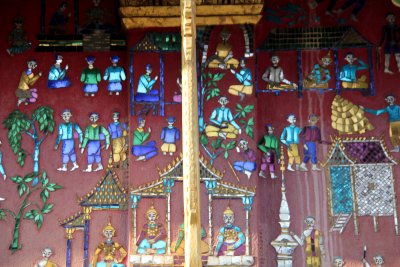
Close-up of the front gable ends which are richly decorated with intricate gold mosaic designs on red ochre background. |
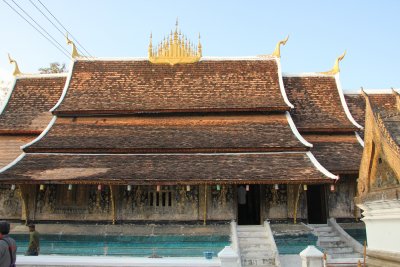
The ancient roof of Wat Xieng Thong temple. |

The entrance to the temple. |
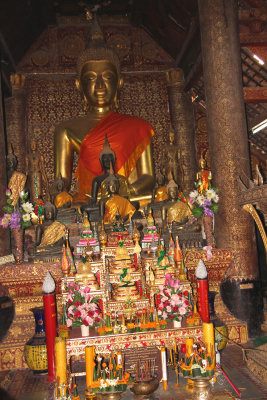
Ornate interior with a large Buddha smiling benevolently down on all visitors. |
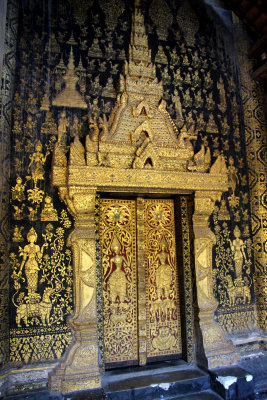
Amazing gold carved doors of another temple that I visited. |
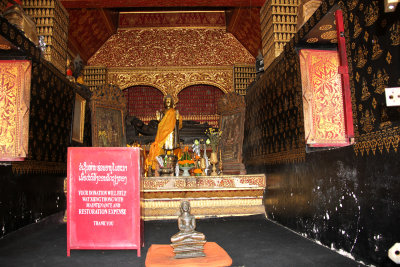
Interior of the temple adorned in gold, red and black and a Buddha shrine. |
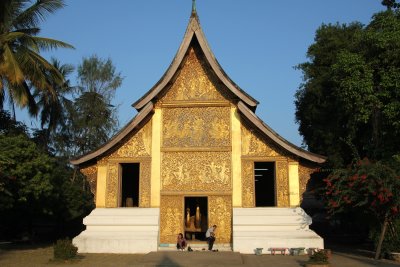
Another one of the many temples I passed by in Luang Prabang. |

Plaque in Luang Prabang stating that it is a UNESCO World Heritage site. |
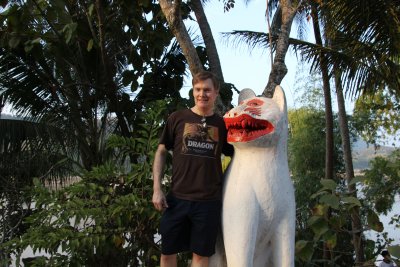
At the end of the tour, I posed with this happy dog sculpture. |
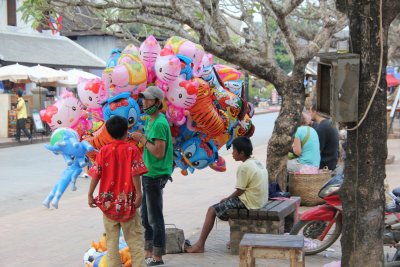
Balloon vender on a main Luang Prabang street. |
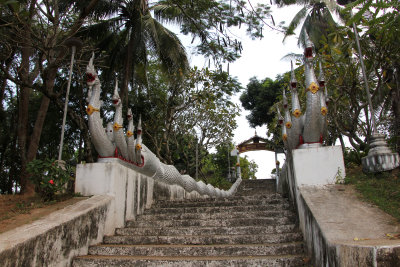
I walked down Th Chao Fa Ngum (street) and admired this stairway with a naga banister. |
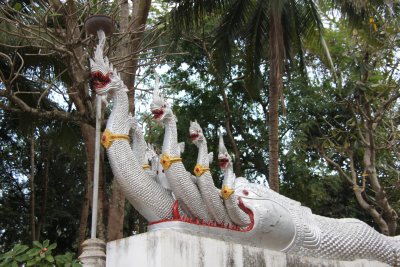
Close-up of the naga banister. |
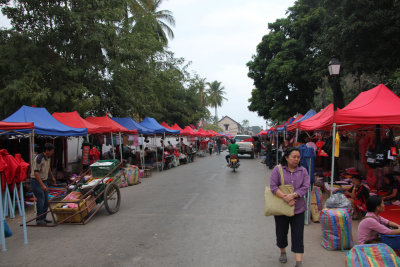
The night market was just starting on Th Sisavangvong (street). It is huge and goes on late and for many blocks. |











